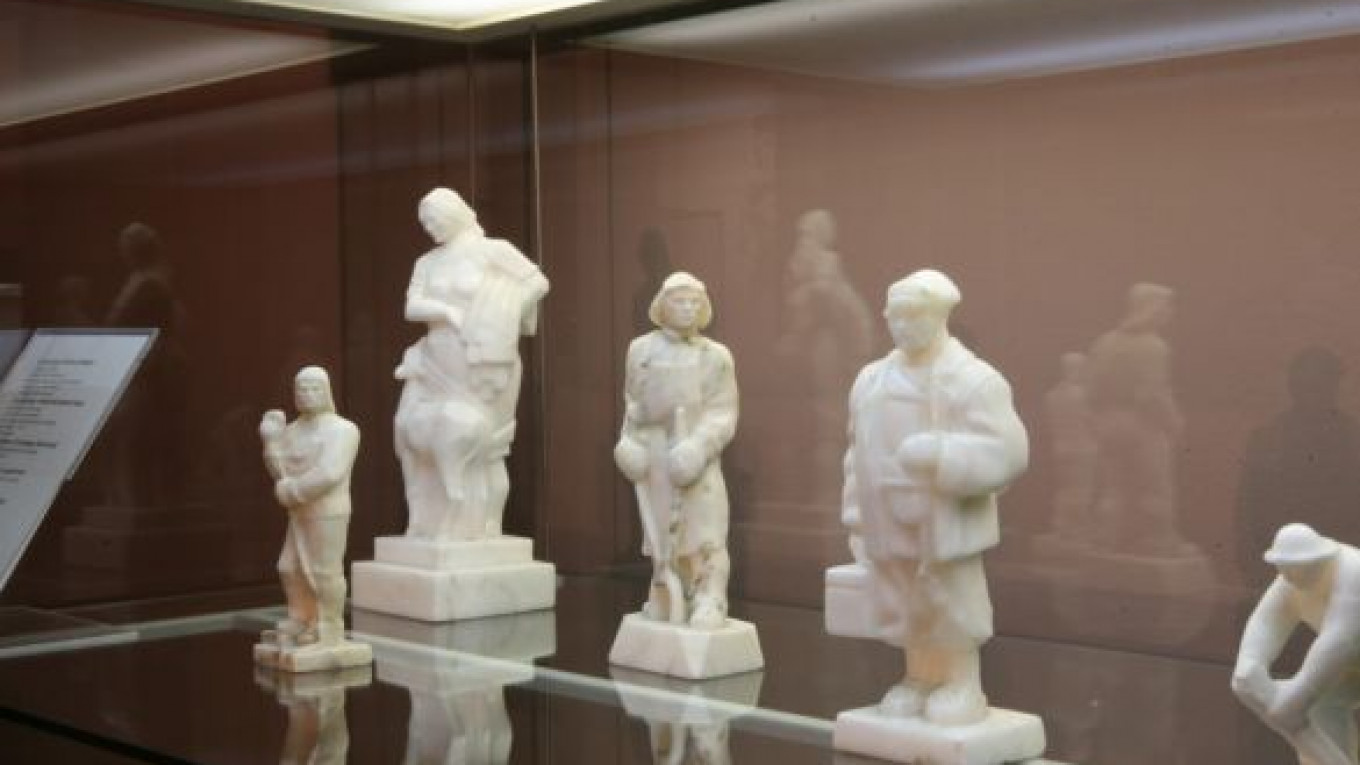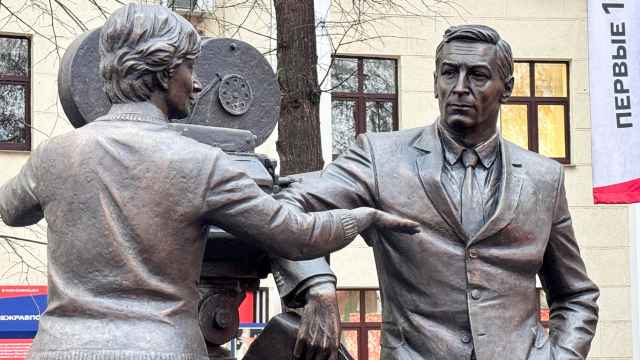Visitors to the Museum of Applied, Decorative and Folk Art get a rare chance to look at a little-known part of the history of Soviet sculpture as it opens up its archives to show its collection of art deco agitprop pieces.
The delicate sculptures, mainly from the 1920s to 1950s, depict industrial workers, pilots, parachutists.
“Between the 1920s and 1940s, it was not only a call for agitation, a new state, a new ideology but the influence of the West, and here we see art deco,” said Andrei Geoda, an expert on the period at the museum.
“This section has never been shown before,” said Natalya Denisova, one of the museum workers. “And it is very interesting for both specialists and visitors because it changes the view of what were decorative arts in the 1920s to the 1950s.”
Most of the work on show was made with foreign eyes in mind. The new state needed foreign capital.
“The Soviet state was very pragmatic. It was the period of the New Economic Policy,” Geoda said. “I think the question was not artistic, but commercial.”
Many of the pieces were on display at a famous show in Paris in 1937, drawing much acclaim.
It not only used the capitalist art deco style, but much of the work looked back to pre-revolutionary work such as that of Faberge.
“The masters who worked before the Revolution were still alive, and they were invited to work,” Geoda said. The export of decorative art was one of the best ways to earn foreign currency, and the state was willing to turn a blind eye to their non-Bolshevik past, he said.
Geoda said that for a very long time even art specialists thought that art deco did not exist after the Revolution — but the exhibit proves that view to be wrong.
“Of course, officially it was not recognized or declared, but the production of this art did exist partly so as to sell it abroad. And in the 1920s and first half of the 1930s, the style of art deco was most in demand and sold well in the West,” he said.
The pieces were often done for an official — a shock worker or some other high-ranking figure, Geoda said. Many of the works on show are part of writing sets.
“If a person had a writing table in his office or his house, it was a kind of social status,” Geoda said.
The exhibit is part of the museum’s new mission to show its vast archive.
“We have a huge collection, most of which nobody has seen. We have stone work from the start of the 19th century to today,” Geoda said.
“Agit Style in the Art Deco Style” runs till May at the Museum of Applied, Decorative and Folk Art. 3 Delegatskaya Ulitsa. Metro Novoslobodskaya, Tsvetnoi Bulvar. Tel. 609-0165, www.vmdpni.ru
A Message from The Moscow Times:
Dear readers,
We are facing unprecedented challenges. Russia's Prosecutor General's Office has designated The Moscow Times as an "undesirable" organization, criminalizing our work and putting our staff at risk of prosecution. This follows our earlier unjust labeling as a "foreign agent."
These actions are direct attempts to silence independent journalism in Russia. The authorities claim our work "discredits the decisions of the Russian leadership." We see things differently: we strive to provide accurate, unbiased reporting on Russia.
We, the journalists of The Moscow Times, refuse to be silenced. But to continue our work, we need your help.
Your support, no matter how small, makes a world of difference. If you can, please support us monthly starting from just $2. It's quick to set up, and every contribution makes a significant impact.
By supporting The Moscow Times, you're defending open, independent journalism in the face of repression. Thank you for standing with us.
Remind me later.






